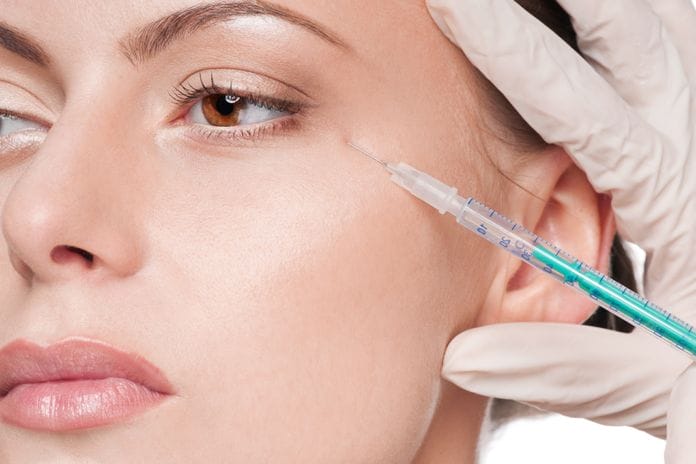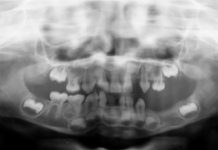There is a new treatment option making its way into dental offices around the country. It’s a little bit controversial but enormously innovative. The dental professionals that choose to offer this treatment and embrace its potential in the dental field will need to get past some preconceived notions first though. That is because this innovative new treatment is Botox and it is causing a stir in the dental field. The name Botox often conjures up images of aging movie stars seeking a fountain of youth, but if we look a little closer, we just might find that Botox is more than just skin deep and may have a lot to offer dentistry.
The underlying stigma that surrounds Botox treatment in the dental setting exists for various reasons. Botox has not traditionally been used in dental practice, and it is viewed as a mainly cosmetic procedure that should only exist in the world of plastic surgeons and dermatologists. A viewpoint like this is limiting the potential that Botox has for the treatment of numerous dental-related conditions. It absolutely has a place in dental offices and can be used for much more than cosmetic purposes.
Botox has had a long and turbulent road to its eventual place in medicine today. Botulism, a foodborne illness that causes paralysis and death, was first reported and studied in the 1800’s. The bacterium toxin, Botulinum, was isolated to be the cause of this illness. It was so dangerous that it was even considered as a possible weapon of biologic warfare during World War II. Fortunately, it was never used. It wasn’t until the 1950’s that doctors began testing Botulinum’s muscle paralytic effects on patients with various muscular disorders2. In the late 1970’s the FDA approved it for the treatment of Strabismus (cross-eyed) patients1. It was during this treatment path that Botulinum was inadvertently found to decrease facial wrinkles. Not long after, Botox gained FDA approval for cosmetic use, and the rest is history.
Botox has since garnered worldwide favor as the treatment of choice for retaining a youthful appearance. For this reason, it has mainly been administered by plastic surgeons and dermatologists. That is about to change as state dental boards are increasingly in support of allowing dentists to offer Botox treatments to patients. As a result, dentists across the country are beginning to seek Botox training4.
The dental field is slowly evolving to accept Botox as a mainstream treatment option, for good reason4. While Botox certainly can be used effectively in a dental office for cosmetic wrinkle reduction, its most exciting uses in dentistry aren’t cosmetic at all.
With proper training, dentists can offer patients a variety of new and effective treatment possibilities including:
- Patients with various types of Temporal Mandibular Joint Disorder can often benefit from Botox treatment4. Much of the pain associated with TMJ Disorders is due to muscular pain from hyperactivity of the muscles of mastication. These disorders can cause significant discomfort for patients and treatment options have been limited in the past. By using Botox to relax these muscles, dentists can provide pain relief that has eluded some patients with these conditions3.
- Bruxism and clenching can also be minimized with Botox injections by reducing the force of the muscular contractions involved. It can make a useful adjunct therapy to night guard appliances3.
- Botox is helpful in reducing a high lip line or “gummy smile” without gingival surgery and crown lengthening. By relaxing the lip muscles, a lower more aesthetic smile line can be achieved in a less invasive manner. While the Botox treatments are temporary, it at least gives patients a more immediate and less aggressive treatment option3.
- Edentulous patients can also benefit from Botox treatment in cases where the lip muscles have become repositioned due to decreased vertical dimension, and it is difficult to accommodate new dentures. Botox can be used to relax and retrain the muscles around a new denture making the transition easier and more successful3.
This list does not even include the cosmetic benefits that Botox can offer patients. Its cosmetic use in dental offices currently may be the most controversial, but could eventually become a mainstream practice in the dental field. We, as dental professionals, know better than anyone that even though dentists have not traditionally performed these treatments in the past, they are highly trained and skilled in the field of facial anatomy and physiology.
Dentists are equally, if not more so, as educated in this specialty as practitioners administering Botox injections today. Dentists are exceptionally qualified to administer facial cosmetic injections with the proper training. Their experience with the anatomy and function of facial muscles is a valuable asset in the administration of Botox and other cosmetic injections, such as dermal fillers. Patients are increasingly concerned with the aesthetics of their dental restorations as well as the function. Cosmetic injections can be used to complement dental restorations and give patients a more visually pleasing result.
In addition to the medical and cosmetic advantages that Botox can offer, it can also be a profitable addition to most dental practices. Botox treatments can add a significant increase in the production totals of a practice. While the focus should always be on patient care and treatment, most dentistry is practiced through a small business model and production is important. Insurance-based dental care is shrinking profit margins across the field and Botox treatments are an effective way to increase them. Obviously, the benefits of adding Botox to the world of dentistry has multiple and varied benefits.
Dentistry is poised to be the next medical specialty to offer Botox treatments, and it might just prove to have an important place in the field. Let’s move past the controversy and show that it is appropriate to have Botox treatments administered in a dental office.
NOW READ: Why Dental Hygienists Should NEVER Treat Patients with Active Oral Herpes
Now Listen to the Today’s RDH Dental Hygiene Podcast Below:
References
- Sifferlin, Alexandra. “Botox:The Drug That’s Treating Everything.” Time, Jan. 2017.
- Mapes, Diane. “Frozen In Time: Botox Over the Years.” NBC News , 22 Oct. 2007, nbcnews.com/id/21369061/ns/health-skin_and_beauty/t/frozen-time-botox-over-years/#.WlkZYainHIV.
- “Botox For Every Dental Practice.” American Academy of Facial Esthetics, facialesthetics.org/patient-info/facial-esthetics/wrinkle-treatment/botox/.
- http://www.ada.org/en/meeting/attendee-information/annual-meeting-news/2016-ada-news-convention-daily/ada-news-convention-daily-thursday-issue-2/botox-not-just-for-cosmetics/












